Eating in Singapore
When my friends Maniko and Eddie sent me an invitation to their wedding in Singapore, I knew I had to go. Not only were they (along with their gentle labrador Bali) among my closest friends when they lived in Nice, but this would be an opportunity to see an Asian country I might not otherwise visit. Though Singapore has a reputation for cleanliness and order, it also has a more down-to-earth side that comes through in its multicultural cuisine inspired by China, Malaysia, Indonesia and India. I had heard about its food courts serving richly spiced dishes for the equivalent of a euro or two, and couldn’t wait to eat my way around the city.
Renting a room in an apartment has become my favorite way to discover a city. In Vancouver, Dublin or Venice, I felt like an insider from the beginning thanks to hosts who pointed me to the best local restaurants, bars and sights. On the Airbnb website, I settled on an apartment in Tiong Bahru, one of the rare older neighborhoods in Singapore (meaning that it dates from the 1940s). Just west of the busier downtown core, it provided a perfect base for exploring the city using the clean and efficient MRT subway or taxis, which proved refreshingly cheap.
The truth is that once I was settled in this cozy flat, which I shared with a food-loving architect from Hong Kong, I almost had trouble tearing myself away from the neighborhood. I started each day at the Tiong Bahru market, where I would admire the tropical fruits, gleaming fresh fish and bean curd in a rainbow of colors before heading upstairs to the food court, lined with stalls that mostly specialize in a single dish. Here I would oxygenate my blood with an ABC (apple, beet and carrot) juice, canceling out the effects of the free-flowing champagne I had enjoyed the night before.
After this I would head to the funky coffee house Forty Hands to drink one of the best brews I have tasted anywhere in the world. To fully appreciate the quality of the fair trade beans, I asked for a filter coffee, which the staff made by hand with great care. After the first day they always remembered my order, and all I had to do was try to grab one of the outdoor tables. Typical of this neighborhood, the street is also home to an exceptional bookshop, Books Actually, which publishes its own volumes of poetry, short stories and novels. The selection of books from other publishers follows no conventions, simply reflecting what the owners and staff believe is worthwhile. Proof of their wisdom is that the shop is always busy, and poetry books sell as quickly as the mini-bundt cakes at Plain Vanilla bakery nearby.
I have never developed an appetite for savory breakfasts beyond a soft-boiled egg, but I kept coming back to the Tiong Bahru food court to try some of the Singapore specialties. My first dish off the plane was prata, an Indian flatbread which came with various fillings (I chose egg). My jet lag disappeared as I tore off pieces of the soft bread and dipped them into the curry sauce, served in a bowl on the side. I’m told that prata is also the perfect dish for soaking up too much alcohol.
The way to eat in a food court is to join the longest line, and in this way I tasted lor mee, a thick, spicy noodle soup served with fish fritters, a traditional topping that is apparently rarely found these days. Shark fritters were an optional addition that I turned down, not from lack of curiosity but simply because there is a limit to how much even I can eat. Another discovery was shui kueh, a popular breakfast dish of steamed rice cakes with an oily sauce of shredded preserved radish. I learned to eat this with two extended toothpicks, cutting them into slippery pieces and trying to pile the salty radish on top.
Overwhelmed by the number of restaurants in Chinatown, I decided to have lunch at the Maxwell Road Hawker Center, which is considered one of the best in the city. As I stood in line for the famed Hainanese chicken rice I happened to run into my friends, proving that Singapore is not such a big place. We were able to compare the food court’s most popular Hainanese chicken with that of the breakaway stand run by its owner’s daughter. This is quite a subtle dish of poached chicken with rice cooked in fat (usually chicken fat though it could be lard) and broth, and the chicken seemed just as juicy at both stands, though the chili sauces for dipping were slightly different.
Another day I took a stroll in the Botanical Gardens – a surprisingly vast green space in the center of this concrete city – before visiting the Holland Village area, where behind the shopping mall I found a few food stands. I followed my nose to one selling laksa, a noodle soup that can have a coconut (curry laksa) or a tamarind (asam laksa) base. From the iPad at the entrance, I chose the curry laksa with seafood, then took a pager and sat down. When my soup was ready, the pager flashed and I picked it up along with a fresh lime juice, one of the staple drinks in Singapore. It’s hard to understand the alchemy that can make a dish one of the most perfect you have ever eaten – there is the timing, your mood, the soreness of your feet, the humidity in the air, and of course that particular combination of ingredients cooked in a certain way – but I had one of these moments as I scooped up the rice noodles in their creamy, chili-red broth laced with laksa leaf, also known as Vietnamese mint. I know that I can never reproduce all the magic, but it’s a dish that I will try to recreate at home.
Like me, Maniko never says no to a good meal and we shared many eating adventures in France, most memorably this one (and I’m not sure that Eddie, who babysat the dog and Sam, will ever forgive us). On my first night in Singapore, several of us headed to Sin Huat Eating House, a restaurant made famous by Anthony Bourdain in this list. He raved about the crab bee hoon, noodles in a secret sauce piled high over the crustaceans, but we didn’t stop there, also trying the frog’s legs with chicken essence, prawns heaped with chopped garlic and spring onions, sautéed greens and a whole fish in a soy-based sauce. The place is a dive, staff are famously inattentive and prices are steep, but Bourdain is right that it is an experience, and judging from the amount we ate the food was addictive.
Even the malls in Singapore take their food seriously, and one day after a girls’ shopping session we entered the maze-like Taste Paradise restaurant to re-energize with dim sum. Alongside the classic shrimp and pork steamed dumplings, we tried asparagus with foie gras sauce, exceptionally good pork buns and the oddly named carrot cake. This classic Singapore dish involves neither carrots nor cake, but is made with cubes of rice flour and daikon radish, stir-fried here with egg and bean sprouts: rib-sticking fare for a humid day.
Though much is made of Singapore’s cleanliness (which frankly didn’t seem like such a bad thing), it would be a mistake to think of the city as sterile. In Little India, I visited a covered market smelling pungently of unrefrigerated meat before meeting my friend Jacquie at Blue Diamond restaurant for biryani so delicious that I forgot to take a picture. With the streets full of men out for their Sunday stroll past stalls heaped with vegetables and stands selling jasmine wreaths, it felt just like India.
To make the most of my last night in town, we visited a restaurant specializing in Peranakan cuisine, the cooking of Chinese migrants who settled in Penang, Malacca, Indonesia and Singapore and inter-married with local Malays (laksa is one example). Its recipes are often complex, calling for rare ingredients and time-consuming spice mixes. Typical of this cuisine is the ayam buah kelouak, a chicken stew made with the kelouac nut whose black flesh is pounded with spices before being stuffed back into the shell. Intense and earthy, it was one of the most surprising dishes that I tasted during my stay.
I couldn’t leave Singapore, without tasting durian, a fruit that looks like a spiky rugby ball and gives off an overpowering smell of unwashed socks. Here it was served over ice kachang, shaved ice topped with fruit syrup and what looked like little green worms (I think they were made of rice flour). Scooped out of its shell, durian has a texture like soft French cheese, maybe a particularly runny Epoisses, and a similarly pungent, fermented taste. For me a spoonful proved more than enough, but the Frenchman and the Korean in our group lapped it up enthusiastically.
If that dinner cost a little more than the others at the equivalent of 25 or 30 euros each for a spread of several dishes, rice and sweet tea, most of the time I spent no more than 2 or 3 euros on a meal. Singapore might be an expensive city in some ways – particularly for hotels – but given the amount you can save on food it remains accessible for budget travelers on their way to Bali or Thailand, which are both just a short, cheap flight away. Who knows, maybe I’ll fall in love with durian on my next trip.

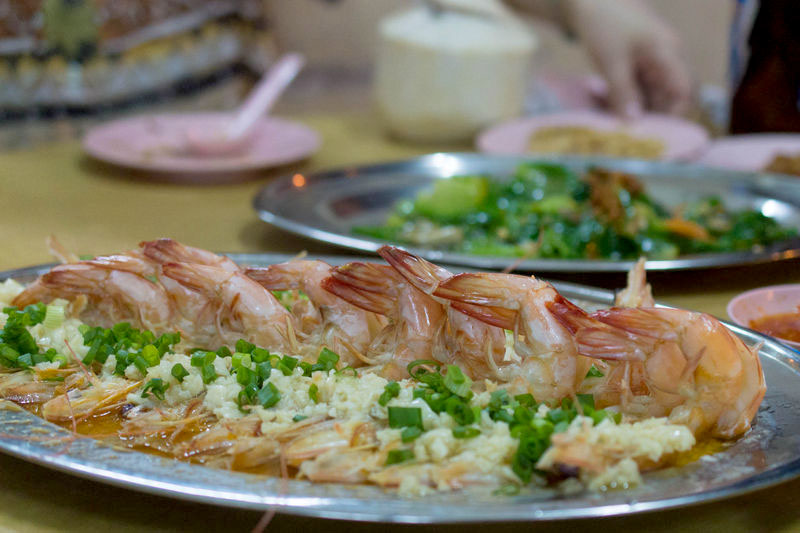
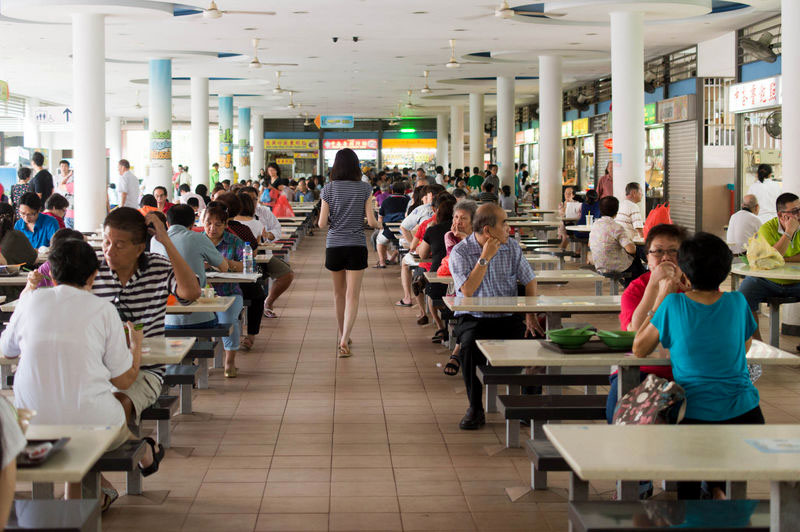
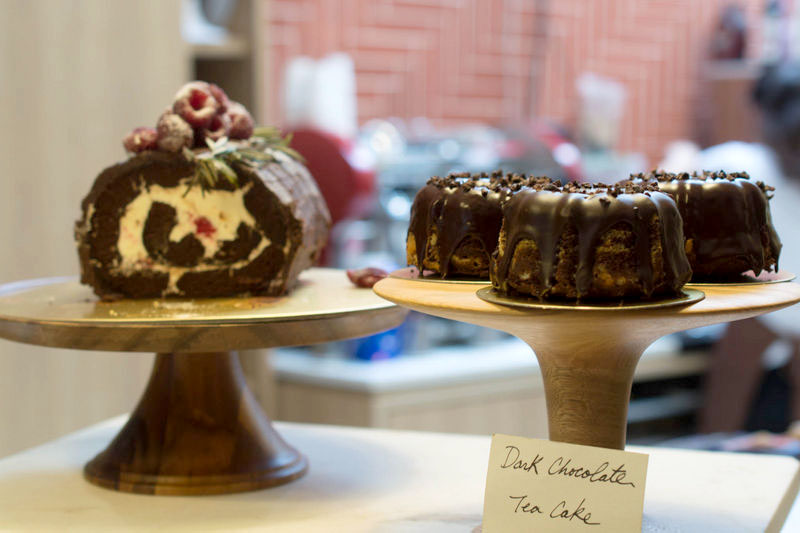
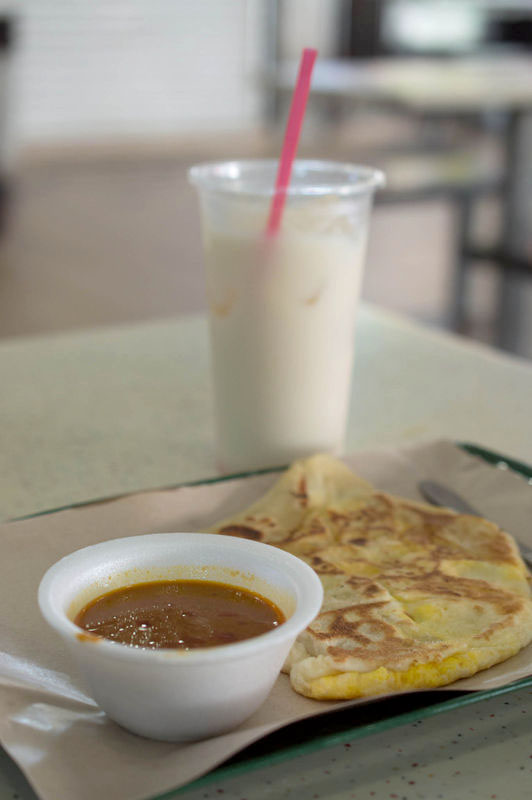
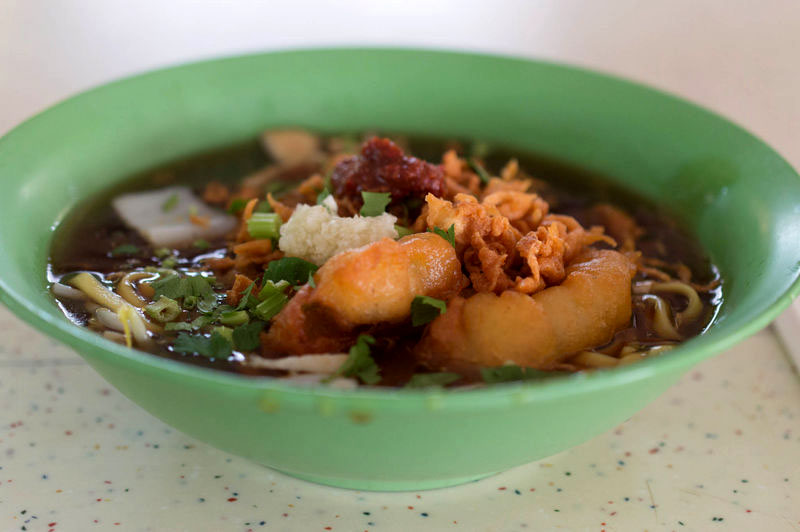
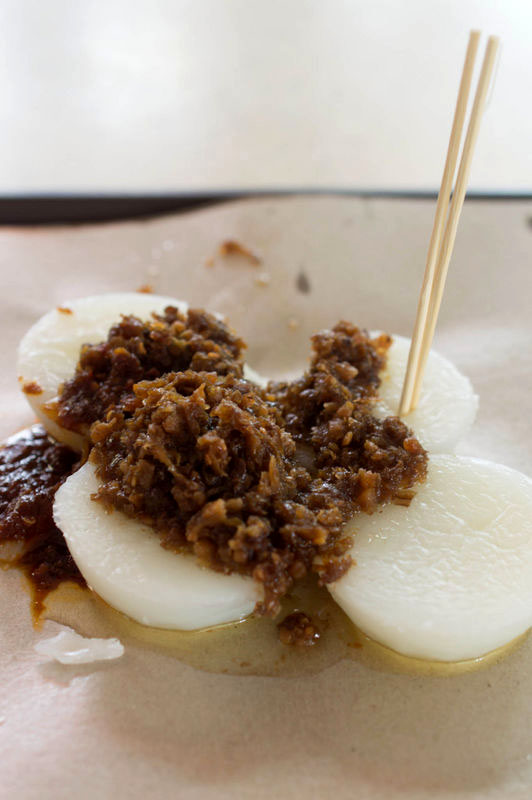
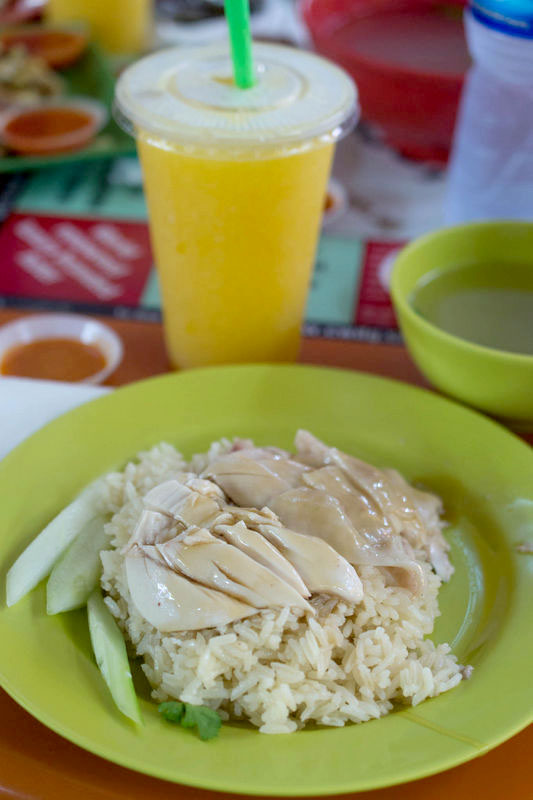
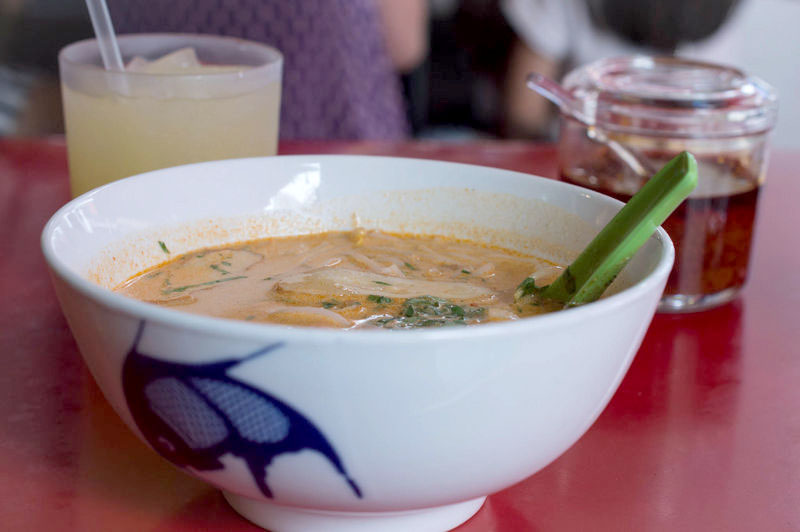
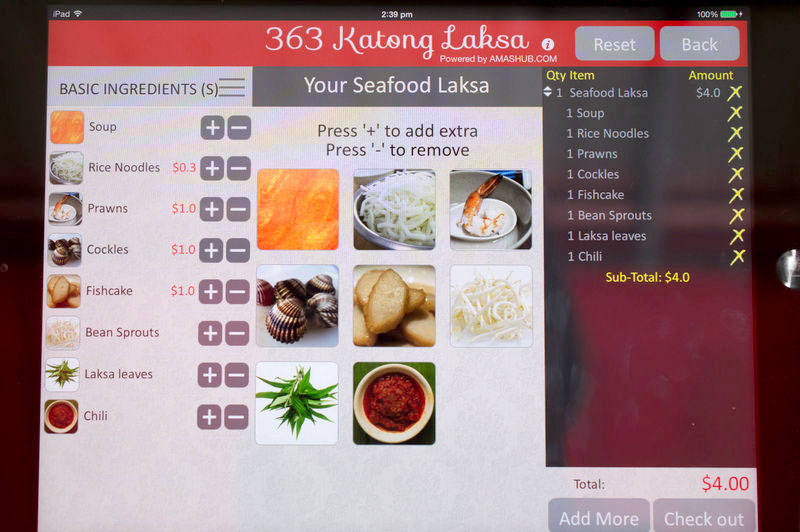
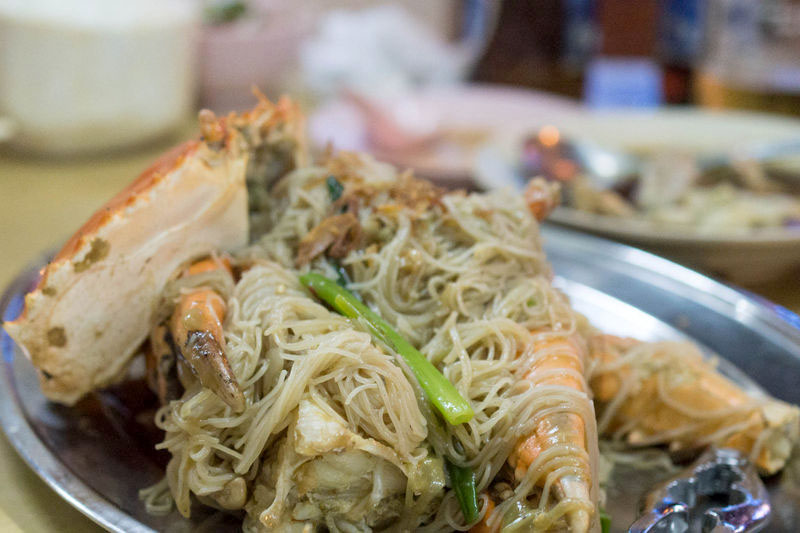
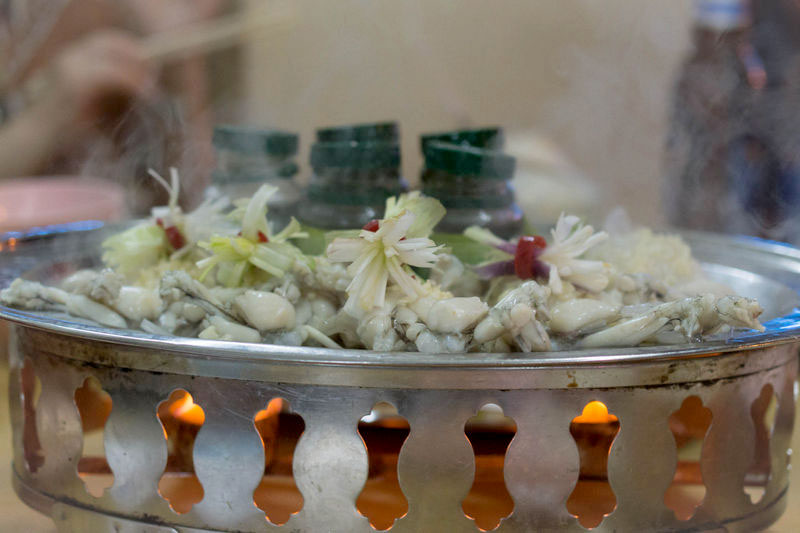
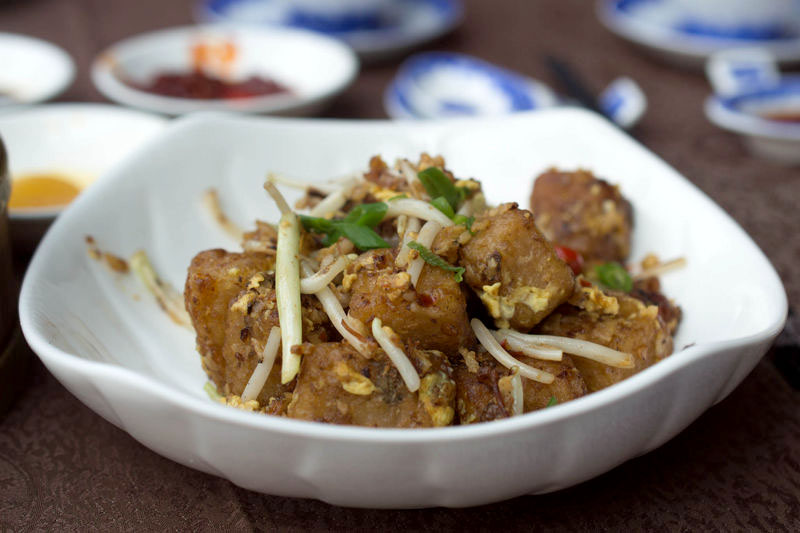
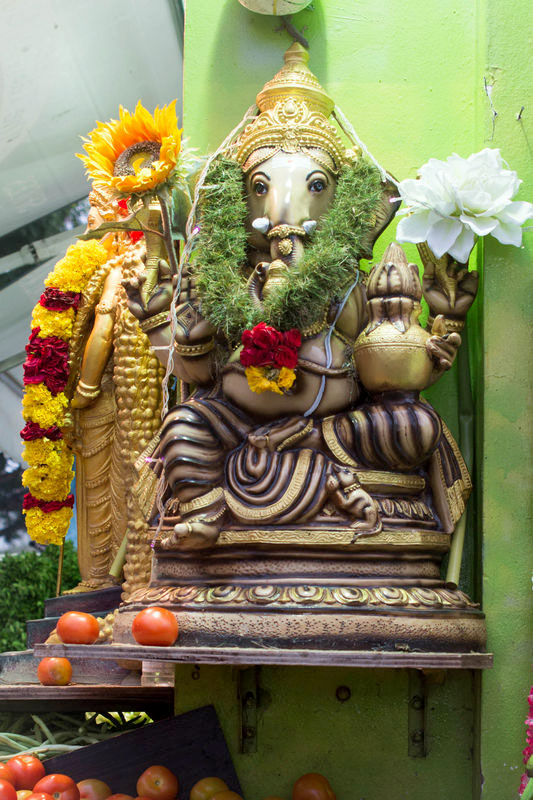
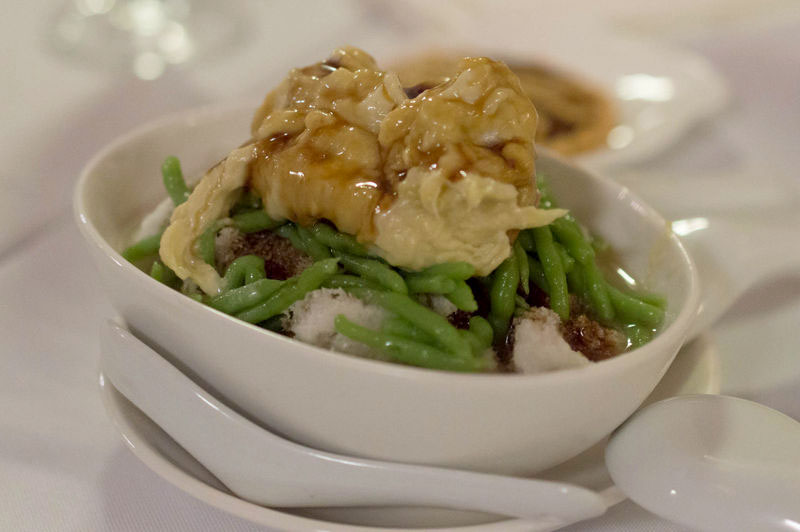



Fab post! thank you for sharing.
http://www.projectsatbangalore.com
Julia, I definitely recommend spending at least a few days in Singapore, it’s a food paradise!
These photos are exactly why I’m sad that we didn’t get more than a few hours’ layover in Singapore en route to Malaysia. We only had chance to sample one bowl of laksa and ever since I’ve been dying to return! Looks like you did it right 🙂
Love your photos and write up! Thanks for coming all the way out here to Singapore. Can’t wait for our next culinary adventure together!